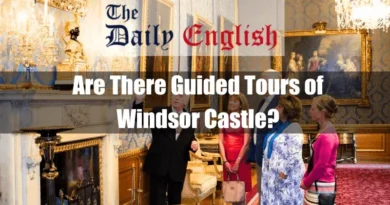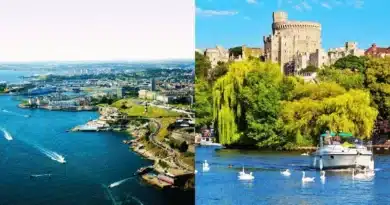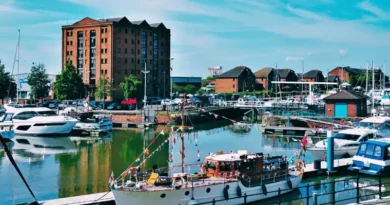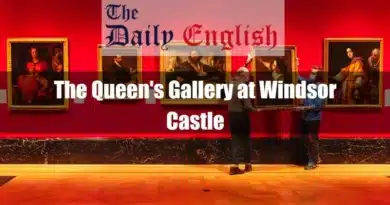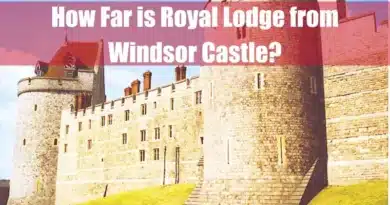How Many Homes Are In Windsor Castle?
Windsor Castle itself doesn’t contain “homes” in the traditional sense, but it does accommodate approximately 150 people, primarily members of the Royal Household, in various apartments and living quarters within the Castle. These apartments are used by staff who support the functioning of the royal residence.
The term “homes” could also refer to the Castle’s role as the monarch’s residence. Windsor Castle has served as a home for British royalty for over 1,000 years and remains an official residence of the British monarch.
Let’s explore this in detail:
Introduction
Windsor Castle, one of the most iconic and historically significant buildings in the United Kingdom, is more than just a monument to centuries of British history. As one of the official residences of the British monarch, Windsor Castle remains a vibrant and active home for many people. In this article, we’ll explore the unique aspects of Windsor Castle, its role as a royal residence, and the community that lives within its walls.

The History and Legacy of Windsor Castle
Windsor Castle has stood as a symbol of the British monarchy for over 1,000 years. Built by William the Conqueror in the 11th century, successive monarchs have continuously inhabited and expanded the Castle. Its strategic location near the River Thames made it an important fortress in medieval England, and over the centuries, it evolved into a grand royal residence.
The Castle has been a focal point for many significant events in British history. It has served as a refuge during conflict, a centre for royal ceremonies, and a place of relaxation for the monarchy. Today, it plays a central role in the life of the British royal family.
Windsor Castle as a Royal Residence
Windsor Castle is one of the official residences of the British monarch, alongside Buckingham Palace in London and the Palace of Holyroodhouse in Edinburgh. It is a working royal palace where the monarch conducts official duties and hosts state visits. The Castle is also a private home for the royal family, who often spend weekends and holidays there.
The Castle’s State Apartments are used for official events and ceremonies, such as banquets, receptions, and the annual Order of the Garter service. When not in use, these rooms are open to the public, offering visitors a glimpse into the grandeur of the British monarchy.
Life Inside Windsor Castle
Windsor Castle is a historical site and a living, working community. Around 150 people live within the castle grounds, including members of the Royal Household, staff, and other residents who support the castle’s day-to-day operations.
The residents of Windsor Castle occupy various apartments and accommodations within the castle complex. These include both luxurious quarters for senior members of the royal family and more modest living spaces for staff. The Castle’s residents include a wide range of personnel, from housekeepers and gardeners to chefs and security staff, all of whom contribute to the smooth functioning of the royal residence.
The Castle also has a fully functioning chapel, St. George’s Chapel, where many significant royal events have occurred, including weddings and funerals. The chapel is also the spiritual home of the Order of the Garter, Britain’s oldest and most senior Order of chivalry.

The Public Face of Windsor Castle
While Windsor Castle is a private residence, it is also one of the most popular tourist attractions in the United Kingdom. Hundreds of thousands of visitors visit the Castle each year to explore its rich history, stunning architecture, and beautiful gardens. The State Apartments, Queen Mary’s Dolls’ House, and St. George’s Chapel are among the most popular attractions within the Castle.
In recent years, parts of the Castle that were previously closed to the public have been opened, allowing visitors to experience more of this historic site. For example, the East Terrace Garden, originally designed for King George IV, was opened to the public in the summer of 2021 for the first time in 40 years.
The Importance of Windsor Castle Today

Windsor Castle continues to be an important symbol of the British monarchy. It reminds us of the royal family’s continuity and tradition while adapting to the needs of a modern monarchy. The Castle’s role as both a private home and a public monument makes it unique among royal residences.
In addition to its historical and ceremonial functions, Windsor Castle plays a crucial role in the daily life of the British monarchy. It is a place where the monarch can carry out official duties in a more relaxed and private setting than Buckingham Palace and where the royal family can retreat from the public eye.
Conclusion
Windsor Castle is a remarkable blend of history, tradition, and modernity. It is a living testament to the enduring legacy of the British monarchy and a functioning royal residence that continues to play a vital role in the nation’s life.
Whether as a tourist destination or a working home, Windsor Castle remains one of Britain’s most important and beloved symbols.




